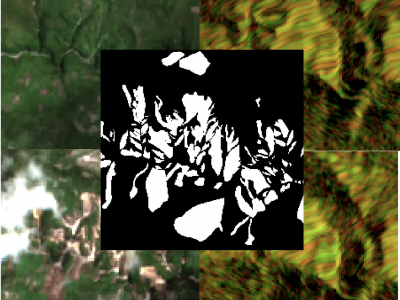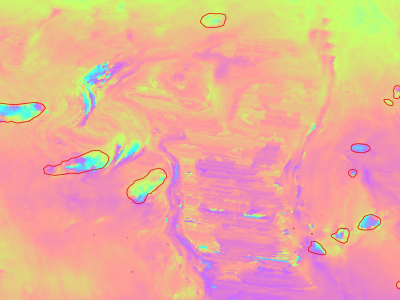Datasets
Standard Dataset
SAR-DEM-Optical Mountainous Dataset for Distortion Management
- Citation Author(s):
- Submitted by:
- Antoine Bralet
- Last updated:
- Wed, 01/03/2024 - 10:51
- DOI:
- 10.21227/16ce-ce92
- Data Format:
- License:
 472 Views
472 Views- Categories:
- Keywords:
Abstract
SAR-optical remote sensing couples are widely exploited for their complementarity for land-cover and crops classifications, image registration, change detections and early warning systems. Nevertheless, most of these applications are performed on flat areas and cannot be generalized to mountainous regions. Indeed, steep slopes are disturbing the range sampling which causes strong distortions in radar acquisitions - namely, foreshortening, shadows and layovers. In order to strengthen the abilities of deep neural networks to perform in such extreme conditions, we propose a new dataset composed of 53.475 triplets of SAR, DEM and optical images acquired over the French Alps. SAR images from Sentinel-1 and optical images from Sentinel-2 have been standardly processed and coregistered with respect to the provided SRTM 1sec HGT DEM. The latter is also part of the dataset to give insights on the locations of strong slopes and therefore of distorted areas to the neural networks. Finally, foreshortening and shadow masks are released in order to evaluate networks performance on these areas. The dataset is provided to be used for unsupervised multimodal approaches or for transfer learning purposes to make standard neural networks generalizable and exploitable despite strong radar distortions.
The dataset is composed of three different archives: SAR, DEM and Optical. Every images is named identically in each sub-folder to identify straightforwardly the corresponding images.
Two further archives are released containing the shadow masks and the foreshortening masks. Masks are named following the same rule as before.
Dataset Files
- ShadowMasks.tar.gz (14.46 MB)
- ForeshorteningMasks.tar.gz (28.71 MB)
- DEM.tar.gz (317.36 MB)
- SAR.tar.gz (4.68 GB)
- Optical.tar.gz (3.85 GB)








